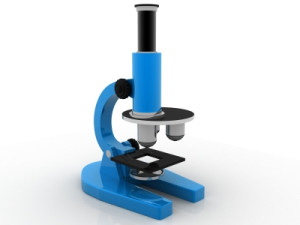In high school, students are encouraged to take several science courses, preferably with hands-on labs. The study of the natural world is all about observation and one of the ways that students learn to observe in detail is through the completion of lab experiments.
Most science textbooks contain experiments that correspond with the subject being studied. To me, those are the fun parts of the course and many of you agree with me. Then there are those of us who just aren’t sure where to begin. For our household, the key to being sure that labs were completed was to have the materials already in the house. Too often, we would arrive at the page that required a lab and since we didn’t have the necessary materials, we just skipped over that page. So, at the beginning of the year, take a look at the list of supplies required for your textbook and go ahead and order all the non-household materials that you can. Home Science Tools is a fantastic resource for science supplies. In fact, they have created kits that contain all the materials you need for the labs in a particular textbook! Once you have the materials in hand, it’s just a matter of carefully reading the instructions and diving in.
You should also have your students get in the habit of writing lab reports to accompany their experiments. There are many forms available online, but the basic components are all the same. Lab reports should contain the purpose of the lab, a hypothesis, a list of materials used, the steps taken in conducting the experiment, the observations made by the student and the reason for whatever happened. Depending upon the data gathered, the results may also involve some calculations or the preparation of a graph. And, always, always use the metric system in all of your measurements!
Dissections does seem to be the one thing that gets us! For those of you who are hesitant about doing these at home – let me encourage you that it’s really not as bad as you think it might be. Most Biology textbooks study the plant kingdom before the animal kingdom, so practice your dissecting skills by dissecting flowers first. You can also practice dissecting chicken leg quarters where you will see skin, muscle and bones. You can purchase a complete dissection tool kit for under $10 and specimens start at about $3. I recommend that you buy a cheap plastic table cloth for the year for your dining room table, then you can be comfortable throwing it all away when you’re done. And, rather than buying the nice blue dissection trays, use meat packing trays instead. Again – cheap and disposable! If you’re still hesitant about doing the labs at home, many co-ops offer lab sciences for the year or you can take advantage of lab intensive weekends. Landry Academy offers fabulous (and fun!) lab intensives for nearly every high school science. You can find those details HERE.
Lastly, you can choose to purchase lab DVDs or videos. However, I do not recommend these as a substitute for hands-on homeschool science labs. Obviously, the experiment will be done correctly every time, but that’s not what science is all about. Even if your experiment does not end up like it’s supposed to – it’s not a failure. You’ll just need to figure out what went wrong – again, it’s all about the observation. Hands-on labs are one of the best ways to learn science so jump in and enjoy!
~to your success,
Joanne






Speak Your Mind